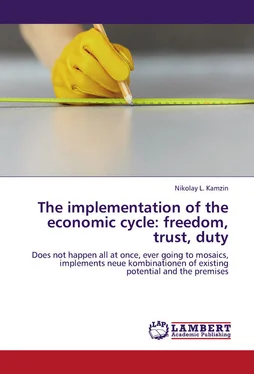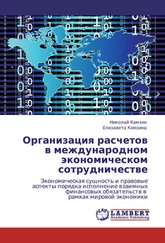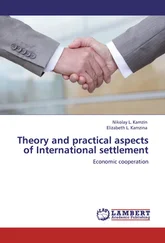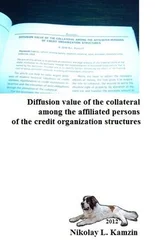3.1. The essence of the exchange rate
International economic transactions involve the exchange of national currencies, the exchange takes place on a certain ratio. The relationship between monetary units of different countries is the price currency of one country expressed in the currency of another country, called the exchange rate. «The main theme of economic life can be indirectly measured in money» [26] Маршалл А. Принципы политической экономии I. – М.: Издательство ПРОГРЕСС. 1983. – С. 69.
.
Currency (exchange) rate (exchange rate) – price per unit of national currency, expressed in units of foreign currency [27] Киреев А.П. Международная экономика. В 2-х ч. – Ч. II. Международная макроэкономика: открытая экономика и макроэкономическое программирование. – М.: Юрайт-Издат. 2006. – С. 178.
.
Exchange rate – this is not a technical conversion factor, and the «price» of the currency of the country, expressed in foreign currency or international currency units.
The exchange rate is necessary for the international foreign exchange, settlement, credit and financial transactions. For example, exporters exchanging foreign currency proceeds to the national as well as in normal circumstances, the currencies of other countries are not treated as cash funds within the State. Importer acquires foreign currency to pay for purchased goods abroad.
3.2. The basis of the exchange rate
Cost basis of the exchange rate is purchasing power parity (PPP etc.), that is, the ratio of rates for their purchasing power. Purchasing power is the national average price levels for goods, services and investments. In the free exchange of the notes for gold and gold free circulation between the two countries exchange rate slightly deviates from PPP because of the mechanism of gold dots. The mechanism of gold dots – the limits of deviation from the monetary exchange rate parity (usually less than 1%) lower (at which begins the outflow of gold from the country) and upper (starts its flow). Monetary parity – the ratio of weight of gold in monetary units (coins) in various countries.
In the paper money circulation exchange rates may significantly deviate from the PPP [28] Вострикова Л.Г. Валютное право. – М.: Юстицинформ. 2006. – С. 36.
. In many developing countries and countries with economies in transition, the exchange rate in 2 – 4 times lower parity. Deviation from the PPP exchange rate is influenced by supply and demand for the currency, which in turn depends on various factors.
Exchange rates are published in the press. Typically, in the current information contained in the previous two quotes of the day and short-term forecasts.
3.3. Factors affecting the exchange rate
Should distinguish between circumstantial and structural (long term) changes affecting the exchange rate.
Conjuncture factors affecting the exchange rate:
– The state of the economy (inflation rate, interest rates, currency markets, speculation, monetary policy, balance of payments, the extent of the use of national currencies in international payments, the acceleration or delay of International Settlements);
– The political situation in the country (political factor);
– The degree of confidence in the national currency at the national and international markets (psychological factor).
Circumstantial factors associated with fluctuations in enterprise activity, political and military-political situation, guesses and predictions. The exchange rate depends on how pessimistic or optimistic about the company with respect to public policy.
The higher inflation in the country compared with other states, the lower the rate of its currency, if not counteract other factors. Inflationary depreciation of money in the country causes a decrease in their purchasing power and a tendency to decline in their exchange rate [29] Шмыкова С.В. Влияние ваютного курса на потребительские цены в России // Экономический журнал ВШЭ. 2005. № 1. С. 3.
.
The exchange rate affects the degree of currency on world markets. In particular, the preferential use of the U.S. dollar in international transactions and international capital markets is a constant demand for it and maintains its course even in the fall of its purchasing power or passive balance of payments [30] Коэн Бенджамин Будущее резервных валют // Финансы & развитие. 2009. С. 26.
. Rising interest rates on deposits and (or) the profitability of securities in any currency will increase the demand for that currency and will lead to higher prices. Relatively high interest rates and yields of securities in the country (in the absence of restrictions on capital flows) will lead in the first place, the influx into this country of foreign capital and thus – to increase the supply of foreign currency, it’s cheaper and more expensive currency. Second, bring a higher return deposit and securities in national currency promote national cash outflow from the currency market, reducing demand for foreign currency, and a decline in the foreign and local currency appreciations.
With an active balance of payments is growing demand for its currency from foreign debtors, its rate can be increased.
Economic importance of the exchange rate determines the need for its regulation.
Along with the market conditions, which include the effect is difficult to supply and demand for currency, is the dynamics of its course, affect, and relatively long-term trends that determine the position of a national currency in the currency of the hierarchy (structural factors).
Structural factors:
– The competitiveness of goods on world markets and its changes. They are caused, ultimately, technological determinants. A forced export stimulates the flow of foreign currency;
– The growth of national income causes an increased demand for foreign products, while imports of goods may increase the outflow of foreign currency;
– A consistent increase in domestic prices compared to prices in the markets of partners increases the desire to buy cheaper foreign goods, while the tendency of foreigners to purchase goods or services that become increasingly expensive, disappears. As a result of reduced supply of foreign currency and depreciation is domestic;
– Other things being equal, higher interest rates is a factor in attracting foreign capital and, consequently, foreign currency, and can also lead to higher prices of domestic. But the rise in interest rates is well known, and the shadow side: it increases the cost of credit and a depressing effect on investment activity in the country;
– The development of securities market (bonds, bills of credit, stocks, etc.) that make up a healthy competition the foreign exchange market. The stock market may attract foreign currency directly, but also attract national funds which would otherwise be used for buying foreign currency [31] Суэтин А.А. Международный финансовый рынок. – М.: КНОРУС. 2009. – С. 26.
.
3.4. The main methods of regulating the exchange rate
The main body of the foreign exchange regulations of the Russian Federation is the Central Bank of Russia. It defines the scope and procedure of appeal to the Russian Federation, foreign currency and securities in foreign currency, sets the rules for the residents and Russia operations with foreign currency and securities in foreign currency, as well as rules for non-residents operations with rubles and securities in rubles; establishes the procedure for compulsory transfer, import and transfer to Russia of foreign currency and securities in foreign currency belonging to residents, as well as events and conditions of opening resident foreign currency accounts with banks outside of Russia, sets out general rules for licensing credit institutions to carry out foreign exchange transactions and issues such licenses, establishes uniform forms of accounting, reporting, documentation and statistics of currency transactions.
Читать дальше












